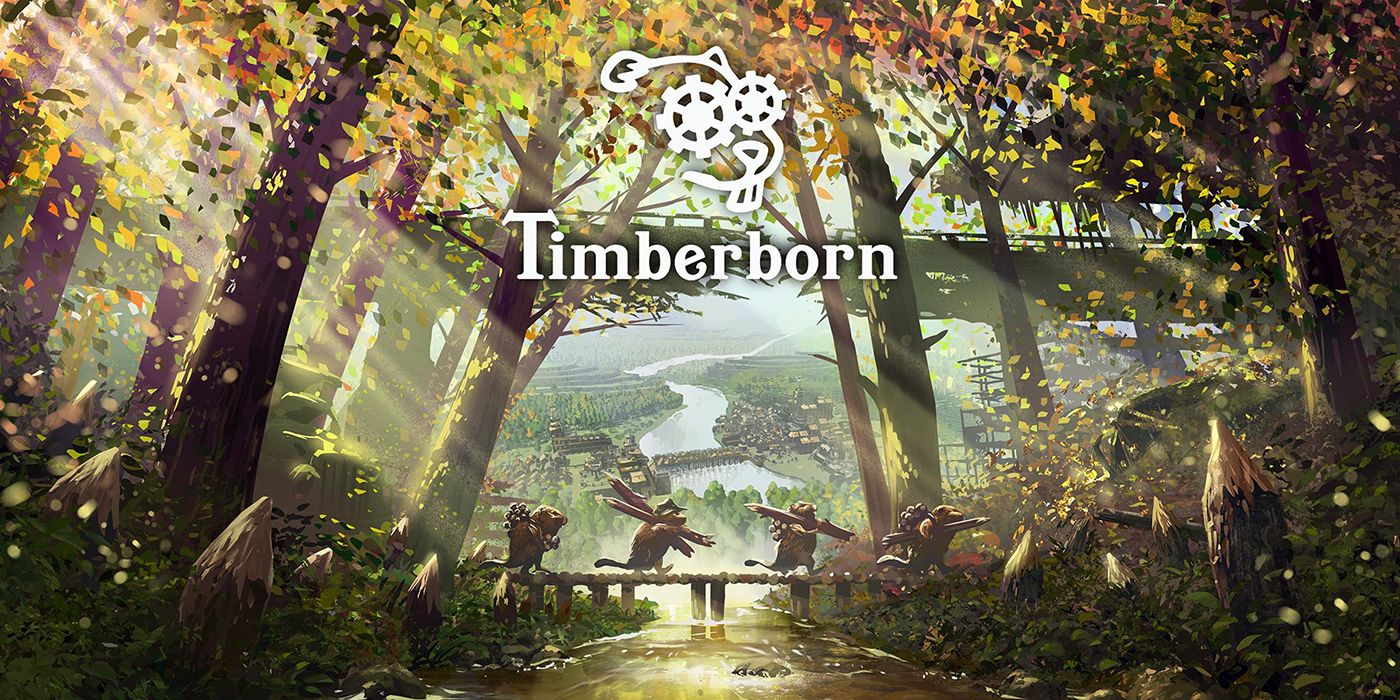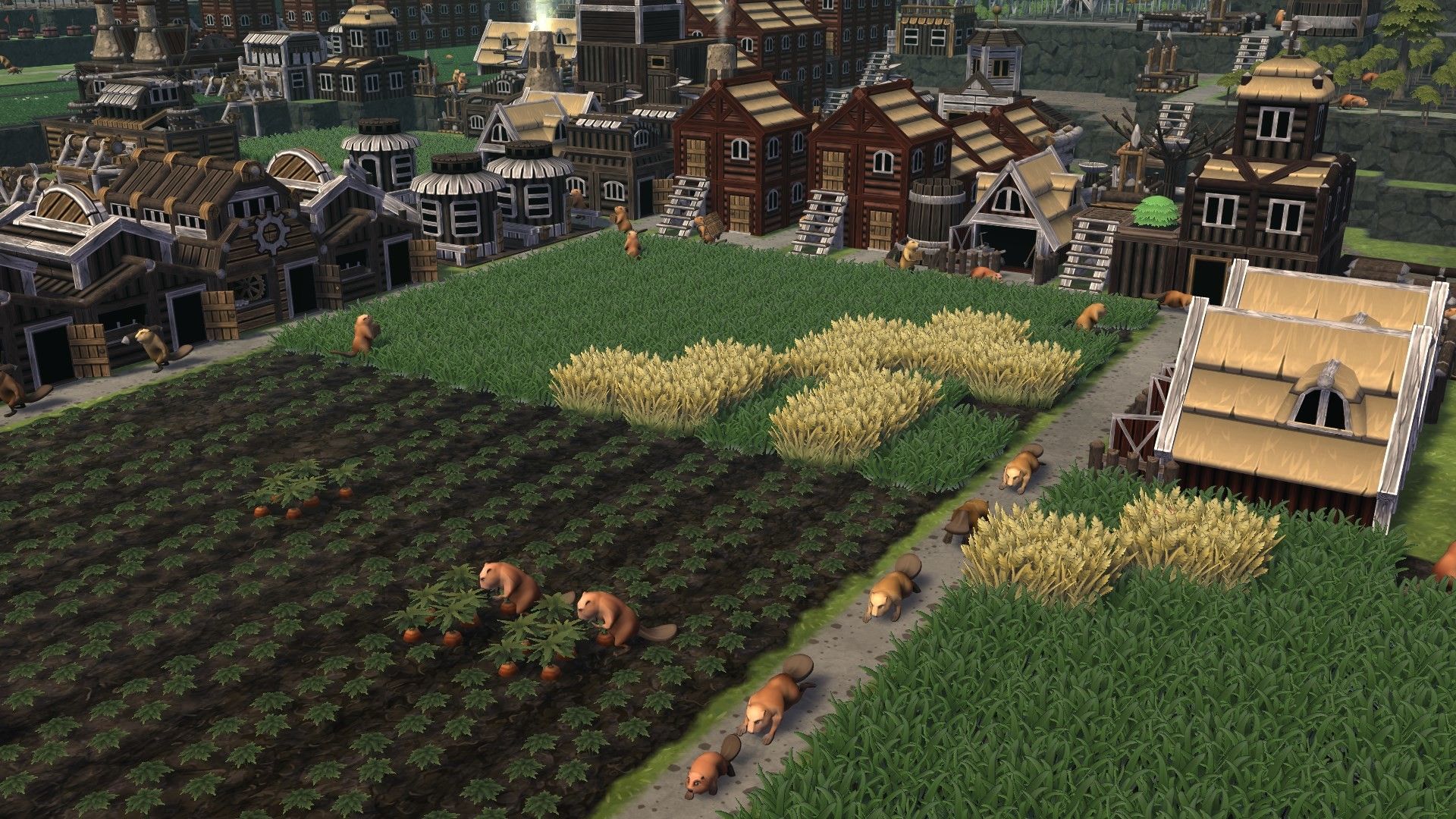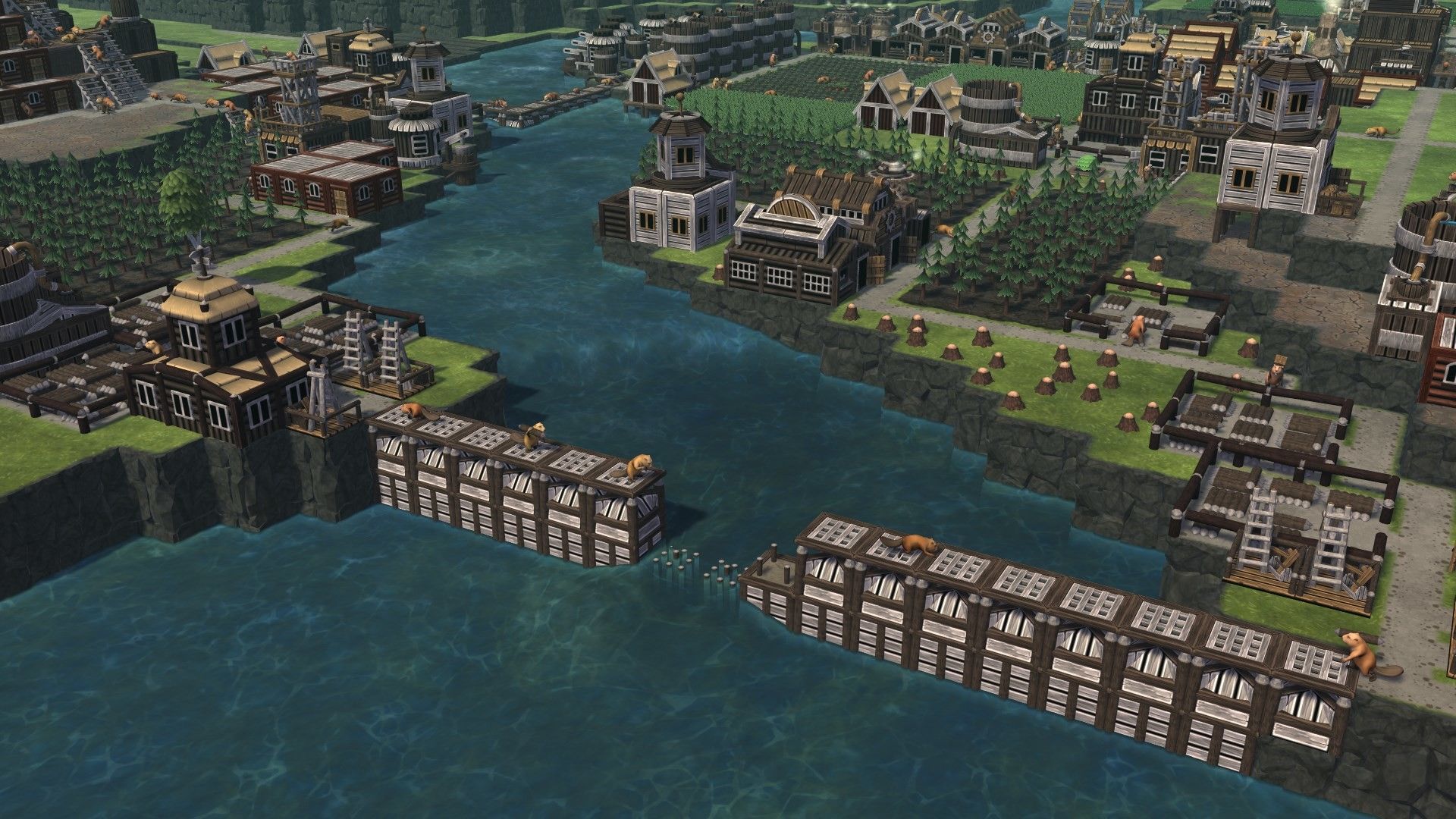
E3's press conferences and the preceding Summer Game Fest pulled back the curtain on a number of long-awaited, high-profile titles arriving in the coming months. However, blockbuster announcements about Elden Ring, Forza, Metroid, and more should not overshadow the trade shows' smaller offerings. Developer Mechanistry showed off a brief trailer for its forthcoming post-apocalyptic beaver civilization builder, Timberborn, which recently received a demo on Steam.
Timberborn not only has a unique premise, but it is also the first title in a stylistic genre unto itself that Mechanistry dubbed 'lumberpunk,' distinguishing it from other building and settlement titles. Game Rant sat down with Mechanistry's Michal Amielanczyk and Jon Biegalski, members of the development team working on Timberborn, to discuss the look, sound, and spirit behind their game's original aesthetic.
RELATED: The 15 Best Indie Games of E3 2021
This indie title is set in a world where humanity is but a memory, and bipedal beavers are ready to reclaim the world in the face of a global drought. Players must coach their beaver civilizations as they build dams, irrigate crops, and create an infrastructure that can endure increasingly harsh water shortages. Each game plays out in alternating wet and dry seasons, similar to other titles that feature safe building phases and dangerous survival phases, challenging players to build a beaver utopia that will last as long as possible.
Beavers are famous for their wood-working abilities, and their industrious natural architecture skills. Timberborn takes that fact and whimsically extrapolates from it, creating a world where woodcraft reigns supreme. Instead of settling for riverside lodges, players can use Timberborn's architecture system to create bustling beaver metropolises with verticality. Biegalski said 'lumberpunk' is not merely a matter of wooden architecture, but wooden ingenuity.
"We really wanted to take that wooden engineering to the next level, having players produce wooden cogs and axles that use water wheels to power very basic machines or achieve a certain level of automation... So ‘lumberpunk’ is essentially using wooden engineering as the centerpiece of both the game’s aesthetic and mechanics."
Even though it might be difficult to see the 'punk' in a pack of busy, bipedal beavers, "steampunk," "cyberpunk," and "dieselpunk" all refer to the dominant industrial and infrastructure frameworks that shape their respective fictional societies. At their best, these works are thought experiments as much as they are visual styles, exploring different ways the world could work if it relied on alternative resources. The fictitious wood-fueled industries of Timberborn definitely seem to fit that bill.

High-concept worldbuilding and fanciful engineering are fun ideas to play with, but to invest gamers, Mechanistry needs a way to foster fondness between players and their civilizations. A big part of that boils down to appealing visual theming, according to Amielanczyk.
"For us, that gold or yellow color melded with the lighter colors of wood, was one of the key visual themes we were going for. We want to create affection for these beavers, and establish them as the sort of folks who are happy to work in the field, eat well, and have a good night’s sleep."
Those idyllic, pastoral qualities in a short, naturalistic race will likely remind Lord of the Rings fans of hobbits. Amielanczyk said that the furry-footed denizens of Middle-Earth were a prominent influence on the look and feel of Timberborn. Originally, the housing designs more closely resembled those of hobbit holes, but were ultimately replaced with more traditional designs to foster the game's focus on verticality.
RELATED: Indie Beekeeping Sim Apico Devs Discuss Minecraft Inspirations, Creating a Cozy Game
Other influences that Mechanistry drew from included old European settlements, particularly Polish villages with thatched roofs. Architecture may seem like an odd point for establishing emotional connections between players and their army of avatars, but seeing the busy beavers hustle and bustle before bedding down in their thatched homes has an endearing impact on many players.

Mechanistry is a small studio without a dedicated composer, so the team turned to outside help for the game's soundtrack. Zofia Domaradzka brings the happy building beavers to life with tracks meant to convey wilderness and architectural engineering in equal measure. The greatest challenge Mechanistry encountered while trying to craft a suitable score that captures the game's spirit was finding a sound that was distinctly natural, non-human, and primal without sounding primitive.
When charting the unknown, especially where sound is concerned, it can be tempting to retread familiar territory. In a post-apocalyptic game with pastoral trappings, something hearkening back to the Middle Ages seems like a natural jumping off point. The developers said initially some of the music sounded very medieval, but that wasn't what they wanted the game to be. Working with Mechanistry, Domaradzka conjured an instrumental score that recalls European folk music, but with decidedly modern arrangements and melodies. Like Timberborn itself, the resulting sound is paradoxical; natural but industrious, relaxing yet urgent, underpinned by the sort of eagerness becoming of beavers.
Timberborn is in development for PC, with a projected release in 2021.

